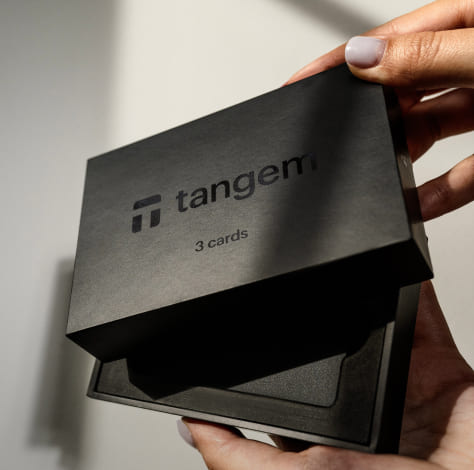
Over the past few years, cold storage has emerged as a highly secure method for cryptocurrency enthusiasts to safeguard their assets. However, the challenge lies in proving ownership of funds without putting private keys at risk. This blog post probes into effective strategies and methods for achieving verification without compromising security, ensuring that your digital wealth remains protected while still being able to demonstrate authenticity to others.
Key Takeaways:
- Cold storage verification enables proof of funds without revealing private keys, enhancing security.
- Utilizes cryptographic methods to validate asset ownership while maintaining privacy.
- Facilitates trust in transactions and audits without the risk of key exposure.
Understanding Cold Storage
For secure asset management, cold storage offers a method of keeping cryptocurrencies offline, thereby safeguarding them from potential cyber threats. Unlike hot wallets, which are connected to the internet and more vulnerable to hacking, cold storage minimizes risk by storing private keys on devices that do not connect to the web. This separation creates a formidable barrier against unauthorized access, necessary for anyone holding a significant amount of digital assets.
What is Cold Storage?
Around the world of cryptocurrency, cold storage refers to any method of storing digital assets that is not connected to the internet. This can include hardware wallets, paper wallets, or even physical devices specifically designed for the secure storage of private keys. By keeping these assets offline, users significantly reduce the likelihood of theft and loss due to online vulnerabilities.
Importance of Cold Storage
Behind the benefits of cold storage lies a critical protective strategy for cryptocurrency investors. With the prevalence of hacks and scams in the digital asset space, using cold storage helps in preserving the safety of one’s funds. Cold storage not only limits exposure to online threats but also ensures that private keys are kept confidential, drastically reducing the chances of unauthorized access.
Considering the staggering rise in cyber attacks and scams targeting digital assets, adopting cold storage is an effective way to protect your investments. While convenience may be sacrificed compared to hot wallets, the long-term security achieved through cold storage often outweighs any short-term drawbacks. The investment in physical security measures and long-term resilience solidifies cold storage as a critical strategy for anyone serious about safeguarding their cryptocurrency holdings.
Private Keys and Security
Any cryptocurrency user should understand the significance of private keys, which serve as a secure method to access and manage digital assets. Private keys are unique strings of characters that act as a private password, enabling ownership and control over funds stored in a cryptocurrency wallet. Loss or theft of these keys can lead to irreversible loss of assets, emphasizing the importance of safeguarding them in a secure manner.
What are Private Keys?
Along with public keys, private keys form the backbone of cryptocurrency security. A public key functions like an address, where transactions can be sent, while the private key is akin to a password that proves ownership of the assets linked to that address. Maintaining control over private keys is necessary; if someone gains access to them, they can manipulate or drain the associated funds without any recourse.
Risks of Exposing Private Keys
Below the surface, the risks associated with exposing private keys can have devastating consequences for cryptocurrency holders. When private keys are shared or become publicly accessible, attackers can easily compromise wallets and deplete the assets within them. Security breaches can occur through phishing attempts, malware, or simply human error, leading to financial loss that is often impossible to recover.
Exposing private keys not only jeopardizes individual assets but also undermines the overall trust in cryptocurrency systems. The potential for massive financial loss makes it critical for users to implement robust security measures, such as hardware wallets, multi-signature setups, and stringent access protocols to protect sensitive information effectively.
Verification Methods
Now, there are several ways to verify the funds stored in cold storage without compromising the security of private keys. These methods typically involve the use of cryptographic proofs or publicly accessible information that can confirm the existence of assets. Verification ensures that claims about fund ownership are accurate while keeping sensitive data secure from potential attackers.
Proving Funds without Revealing Private Keys
Keys to demonstrating ownership of assets while maintaining privacy lie in utilizing techniques such as cryptographic proofs and balance verification. By providing a signature that proves ownership without exposing the private keys, users can validate their holdings. This method allows for transparency and verification while safeguarding against unauthorized access.
Tools for Cold Storage Verification
With various tools available, users can efficiently manage and verify their cold storage holdings. Software solutions like block explorers, which allow for public ledgerSome of the links on this page are affiliate links. If you purchase a cold wallet through these links, we may earn a commission at no extra cost to you. scrutiny, and wallet applications offer mechanisms to sign messages without revealing vital information. These tools enhance the user’s ability to verify funds while ensuring their private keys remain untouched and secure.
To maximize security and usability, users should utilize tools that support multi-signature verification and hardware wallets. These systems not only enhance security but also provide ease of use through interfaces designed for dual-layer verification processes. When selecting tools for cold storage verification, ensuring they are from trusted sources is paramount, as reliance on unverified software can expose users to significant risks.
Best Practices for Cold Storage
Keep your cold storage devices secure by employing multifactor authentication and using hardware wallets. Implement encryption for sensitive data, ensuring that your private keys are stored offline and are never exposed to the internet. Regularly update your security protocols and ensure that only trusted personnel have access to the cold storage solutions. Consider using a safe or vault specifically designed for secure storage to further protect your assets.
Maintaining Security and Privacy
On top of strong physical security, it is important to maintain operational security by limiting knowledge of the storage method and locations of private keys. Use code words and compartmentalization tactics to keep information secure among individuals involved in managing cold storage, preventing any single point of failure from compromising your assets.
Regular Verification and Audits
To ensure the integrity of your cold storage solution, conduct regular audits and verifications of your stored assets. This includes checking the functionality of your hardware wallets, confirming transaction history, and ensuring accuracy in recorded balances. Having a routine in place will alert you to any potential discrepancies.
Storage audits should focus on validating the existence of funds without exposing private keys. Create snapshots of account balances periodically and utilize trusted third-party services for verification when needed. Involving a multi-signature setup can enhance security and mitigate risks associated with a single point of failure. Conduct audits systematically to identify any anomalies and remain proactive in protecting your assets.
Real-World Applications
Unlike traditional methods of demonstrating asset ownership, cold storage verification enables users to prove they possess funds without revealing their private keys. This method significantly enhances the security of cryptocurrency holdings, allowing users to engage in transactions or audits with confidence that their assets are protected against unauthorized access. Moreover, it addresses regulatory concerns by demonstrating compliance without compromising the underlying security features inherent to cold storage systems.
Additionally, the adoption of cold storage verification methods can bolster the credibility of blockchain projects and financial institutions, fostering trust among investors and the general public. By providing a verifiable proof of funds mechanism, companies can attract a broader clientele, ensuring stakeholders that their assets are securely managed while minimizing the risk of theft or loss.
Use Cases of Cold Storage Verification
At the forefront of cryptocurrency exchanges, cold storage verification is important for ensuring that funds are stored securely while proving solvency for depositors. For instance, an exchange may utilize cold storage verification to demonstrate that it holds adequate liquid assets to cover customer withdrawals, instilling confidence in users. Similarly, institutional investors conduct cold storage verification to substantiate their holdings during audits without revealing sensitive information, reinforcing compliance and operational transparency.
Furthermore, businesses engaged in blockchain technology can leverage cold storage verification to enhance their safety measures. By providing proof of asset ownership without disclosing private keys, organizations can mitigate risks associated with cyber attacks, thus protecting their intellectual property and financial assets in a more secure environment.
Industry Standards and Compliance
Against a backdrop of evolving regulations, adherence to industry standards is vital for businesses implementing cold storage verification. The ability to comply with emerging legal frameworks while maintaining robust security practices is a significant concern for companies handling digital assets. Notably, regulatory bodies are increasingly emphasizing the importance of transparency in asset management as part of anti-money laundering (AML) and know-your-customer (KYC) efforts.
For instance, the Financial Action Task Force (FATF) guidelines underscore the need for businesses to demonstrate their asset holdings while ensuring that security measures are upheld. This includes developing systems capable of cold storage verification that align with compliance protocols, thus offering reassurance to regulators and investors alike that their assets are being managed responsibly. Emphasizing transparency and accountability, such practices can significantly enhance an organization’s reputation within the industry.
Future of Cold Storage Verification
Many advancements in technology and security protocols will shape the future of cold storage verification. As the cryptocurrency landscape evolves, new methods for proving funds without revealing private keys will emerge, providing enhanced privacy and security to users. Innovations in cryptographic techniques and secure hardware devices will play a significant role in addressing the current challenges faced in validating asset ownership while safeguarding sensitive information.
Moreover, the integration of artificial intelligence and machine learning will enable more sophisticated verification processes. These technologies will allow for real-time audits and risk assessments, ensuring that cold storage solutions can adapt to evolving threats. In this dynamic environment, future cold storage methodologies will likely focus on increasing usability while maintaining high security standards.
Emerging Technologies
Around the globe, blockchain technology is being linked with secure hardware solutions to revolutionize cold storage verification. Developments in multi-signature wallets and advanced cryptographic protocols will facilitate secure and verifiable transactions while keeping private keys safe. As decentralized finance (DeFi) continues to grow, these technologies will need to adapt to support increased transaction volumes and user requirements.
Trends in Cryptocurrency Security
By prioritizing the significance of user education and improved infrastructure, cryptocurrency security is witnessing notable advancements. As cyber threats become more sophisticated, solutions such as hardware security modules (HSM) and zero-knowledge proofs are gaining traction to protect users’ assets effectively. This transition is necessary in the face of growing risks, as more investors seek ways to safeguard their wealth in a volatile market.
Due to the rising importance of asset security, integrating strong authentication measures and embracing a multi-layered security approach are vital for long-term sustainability in cryptocurrency markets. The focus on enhancing user protections not only helps in preventing loss of funds but also builds trust among investors, creating a more resilient ecosystem. Remaining vigilant about potential vulnerabilities and continuously updating security protocols will be paramount for every participant in the cryptocurrency space.
To wrap up
The emergence of cold storage verification presents a significant advancement in proving the existence of funds while safeguarding private keys. By utilizing cryptographic methods, these systems allow users to authenticate their asset holdings without the need to reveal sensitive information, thus enhancing security measures against potential theft or fraud. This innovative approach not only instills confidence in stakeholders but also aligns with the growing demand for transparency in cryptocurrency transactions.
As the digital economy evolves, methods that protect users’ financial interests will become increasingly vital. Cold storage verification represents a pivotal step toward achieving a reliable framework for asset verification that prioritizes user privacy. Embracing this technology can pave the way for broader adoption of cryptocurrencies while maintaining the integrity and safety of personal financial data.
FAQ
Q: What is Cold Storage Verification?
A: Cold Storage Verification is a method used to prove ownership of cryptocurrency funds without exposing private keys. It enables users to demonstrate that they have certain assets without compromising the security of their wallets.
Q: How does Cold Storage Verification work?
A: Cold Storage Verification typically involves generating a digital signature that proves ownership of funds. This signature can be shared publicly, allowing third parties to verify that the signer holds the specified assets without revealing sensitive information.
Q: Why is it important to avoid exposing private keys during verification?
A: Exposing private keys can lead to unauthorized access to funds, resulting in theft or loss. Cold Storage Verification mitigates this risk by allowing users to prove their holdings while keeping their private keys secure, thus enhancing overall security.







